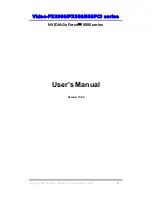
To Create a RAID Volume With the
FCode
Utility (SPARC)
displayed in the
show-devs
output, use the
select
and
.properties
commands to
determine which card you want and then select that card.
{0} ok
select /pci@1e,600000/pci@0/pci@3/LSI,sas@0
{0} ok
.properties
…
subsystem-id 00003050
The internal facing cards contain a subsystem-ID of
00003050
. To further specify the card,
you can also display the SAS addresses of any connected drives by using the
show-children
command.
6.
Review the following table for useful
Fcode
commands.
FCode Command
Description
show-children
Lists all connected physical drives and RAID volumes.
show-volumes
Lists all connected RAID volumes in detail.
create-raid0-volume
Creates a RAID 0 volume (minimum two targets).
create-raid1-volume
Creates a RAID 1 volume (exactly two targets).
create-raid10-volume
Creates a RAID 10 volume (minimum four targets).
delete-volume
Deletes a RAID volume.
You are now ready to use the
FCode
commands to optionally create a RAID volume on
the HBA. For more information, see
“To Create a RAID Volume With the
. If you plan to install the OS onto a physical drive, go to
an Alias for a Bootable Drive (SPARC)” on page 30
To Create a RAID Volume With the
FCode
Utility (SPARC)
Perform the steps in this section if you want to optionally configure a RAID volume on a
SPARC system. You can then install the Oracle Solaris operating system (OS) on that RAID
volume.
Note -
Do not perform the steps in this section if you want to install the OS on a
non-RAID volume. Instead, go directly to
“To Create an Alias for a Bootable Drive
.
1.
Use the
show-children
command to list all the physical drives attached to the
HBA.
Chapter 3 • Creating a Bootable Drive in a Preboot Environment
29
Summary of Contents for SG-SAS6-INT-Z
Page 2: ......
















































